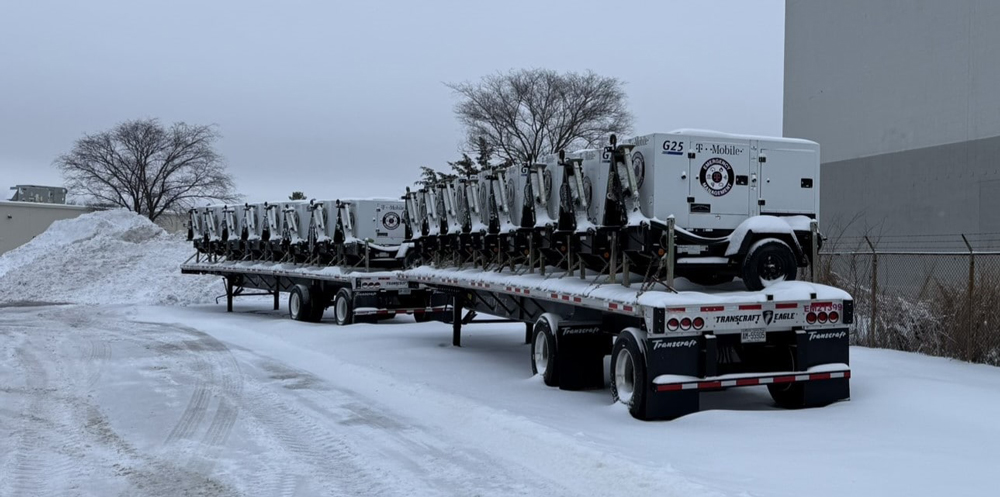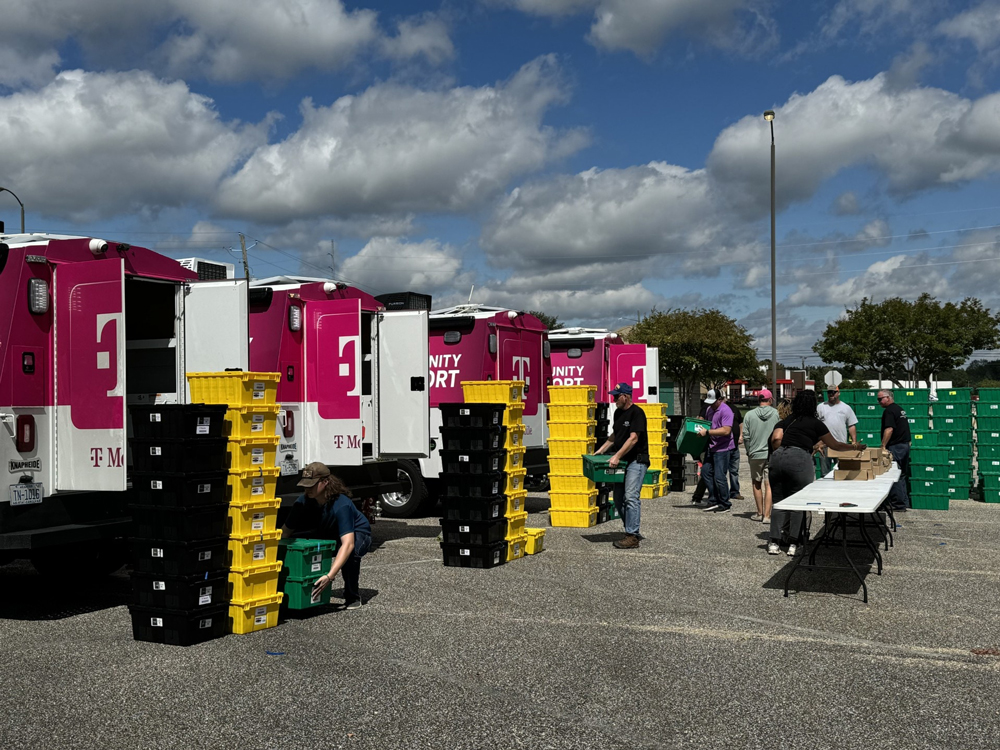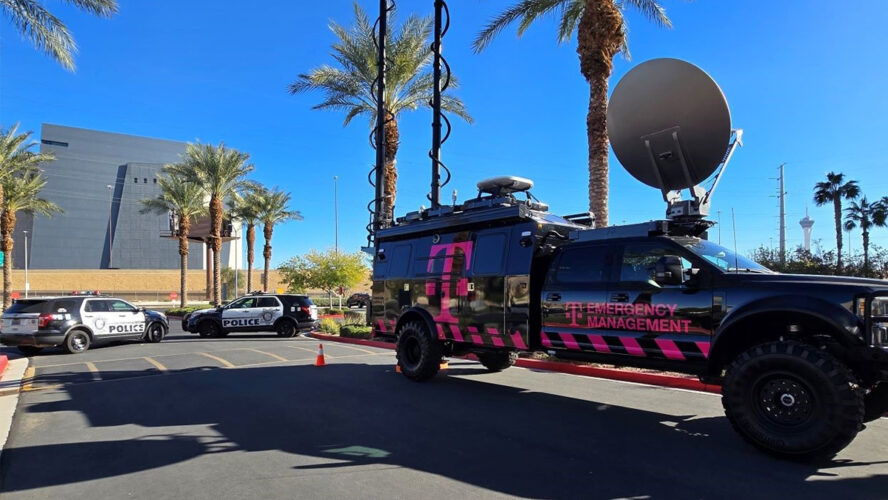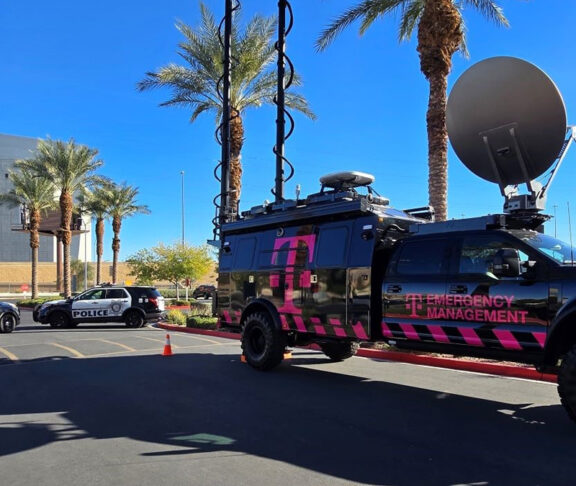In times of crisis, connection isn’t optional. By investing in satellites, drones and resilient networks, T-Mobile is ensuring communication endures even in the toughest conditions.

Jon Freier
President, T-Mobile Consumer Group
In recent years, as wildfires, hurricanes, and floods have grown more frequent, reliable communication has become just as critical as food, water, and shelter.
And no one knows this better than Jon Freier, T-Mobile’s president of Consumer Group who leads response efforts when disaster strikes. “T-Mobile is constantly preparing and has made disaster readiness a priority, investing in technology and infrastructure to keep people connected when it matters most,” Freier explained. “From satellites to drones to community support vehicles, the company is reshaping what emergency response looks like — proving that connection is more than just a signal.”
Stronger infrastructure, smarter networks
T-Mobile has also been fortifying its network on the ground, investing in backup power and hardening sites across the country and Puerto Rico. This year the company completed a $2 billion network expansion and hardening project in Florida. And AI is playing a role, too. T-Mobile’sSelf-Organizing Network (SON) monitors performance in real time, adjusting antennas to broaden coverage areas, rerouting traffic and managing power to maximize resilience when disaster strikes, keeping the largest possible number of customers and first responders connected while recovery operations are ongoing.

Reaching where traditional networks can’t
In July, T-Mobile officially launched T-Satellite, the nation’s first satellite-to-mobile network that automatically connects to almost any modern smartphone. That means that even if wireless towers or power lines go down, people can still send texts, including to 911, and receive Wireless Emergency Alerts (WEAs), almost anywhere the sky is visible. Even nonsubscribers who have compatible devices can receive critical life-saving information through WEAs.
And as Freier points out, “The impact of this new service has been immediate. During the recent flooding in Texas where neighborhoods lost power, nearly 94,000 people used T-Satellite to send 287,000 text messages — updates to loved ones and messages to 911.”
Taking disaster response higher with drones
When roads are blocked and infrastructure is destroyed, T-Mobile has a high-tech drone fleet that it’s expanded by 50% in the past year. Heavy-lift models can carry supplies or portable connectivity gear weighing up to 100 pounds. Search-and-rescue drones equipped with thermal imaging and high-resolution cameras help locate people, map damage, and guide response teams. Tethered drones hover hundreds of feet in the air, staying aloft for hours to create temporary coverage bubbles nearly two miles wide.
“Paired with an expanded ground fleet — 30% more mobile cell sites and trucks providing coverage including our new XL line, plus nearly double the number of satellite antennas (VSATs) — T-Mobile’s disaster-response arsenal is larger, faster and more capable than ever,” Freier emphasized.
Rapid response on the ground
At the same time, T-Mobile’s community support fleet helps get communities back online. Upgraded Wi-Fi trucks, trailers, and command centers are now equipped with higher-capacity charging stations and Wi-Fi. “These units deploy to shelters, fire stations and community hubs, offering free connectivity, charging, and supplies to anyone who needs them, not just our customers,” Freier said.
Prioritizing first responders
For firefighters, police, and emergency crews, seconds can mean the difference between life and death. T-Mobile built T-Priority to give first responders access to a dedicated 5G network slice when it’s most congested, ensuring faster speeds and lower latency with the highest priority.
Agencies across the country are already experiencing T-Priority in action. During the wildfires in Southern California earlier this year, firefighters relied on T-Priority to share updates from the field — enabling safer, faster decision-making as conditions shifted minute by minute.

Be ready: Preparedness tips
September is National Preparedness Month, and Freier reminds people that simple steps like turning on emergency alerts, enabling Wi-Fi calling and packing a go-bag can make a big difference in a crisis. Because when disaster strikes, connection can be the difference between fear and hope, between isolation and safety. As Freier says, “In times of crisis, connection isn’t optional — it’s essential. And T-Mobile is building the technology to keep it strong.”


